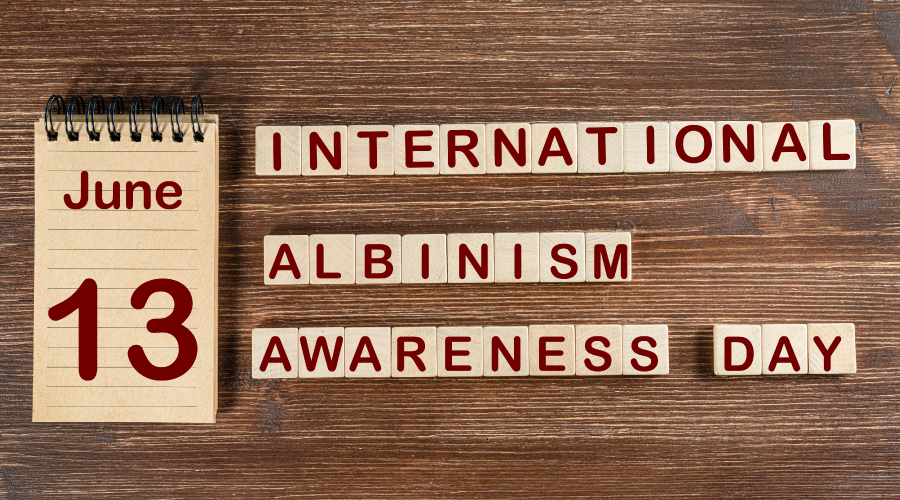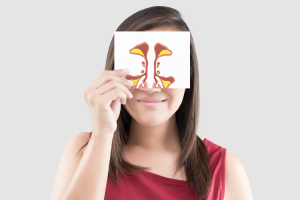

For most people, pigmentation develops normally due to the production of melanin. However, for those with albinism, little to no melanin is produced, resulting in little to no pigmentation in the skin, hair, and eyes. Albinism is caused by mutations in genes that control the production of melanin. There are different types of albinism, ranging from mild to severe. While albinism cannot be cured, the symptoms can be managed. On International Albinism Awareness Day, it is important to spread awareness about this genetic condition and advocate for the rights and inclusion of those living with it.
What is Albinism?
Albinism is a genetic condition that results in little or no production of melanin pigment. Melanin is responsible for skin, hair, and eye colour. With albinism, the body is unable to properly produce melanin, which can lead to vision problems and increased sensitivity to sunlight.
There are two types of albinism: oculocutaneous albinism (OCA) which affects the skin, hair, and eyes, and ocular albinism (OA) which primarily affects the eyes. The most common form is OCA, which is caused by mutations in genes that provide instructions for making melanin. OA is caused by mutations in genes involved in eye development and melanin production in the eyes.
People with albinism tend to have extremely light skin and hair and their eyes may be pale blue, grey or light brown in colour due to lack of pigment. Vision problems are also common, including photophobia (sensitivity to light), nystagmus (involuntary eye movements), and astigmatism (blurred vision).
While there is no cure for albinism, treatment focuses on managing symptoms and preventing complications. This includes wearing sunglasses and sunscreen to protect sensitive skin, low vision aids like special magnifying glasses, and possible vision therapy or surgery to correct eye misalignment or other vision issues.
Genetic Causes and Types of Albinism
Albinism is caused by mutations in genes that provide instructions for making melanin, the pigment that gives skin, hair, and eyes their colour. As mentioned above, there are two types of albinism:
1. Oculocutaneous albinism affects the skin, hair, and eyes. It’s caused by mutations in genes that provide instructions for making melanin. The most common forms are caused by mutations in the OCA1, OCA2, OCA3, and OCA4 genes.
2. Ocular albinism only affects the eyes. It’s caused by mutations in the GPR143 gene which provides instructions for making a protein involved in pigment cell development.
People with albinism typically have vision problems due to lack of pigment in the retina and are at higher risk of skin damage from the sun due to lack of protective melanin. Albinism is a lifelong condition but treatment can help manage symptoms and complications.
Genetic testing can determine the specific gene mutation that caused a person’s albinism. Carrier testing may also be available for family members to see if they carry a gene mutation that could be passed on to their children.
Albinism affects people of all ethnicities. While rare, it is one of the most common genetic disorders. Albinism awareness and advocacy aim to promote inclusion, combat stigma and discrimination, and improve quality of life for those with this condition.
Common Symptoms and Treatments for People with Albinism
Here are some of the most common symptoms that people with Albinism face:
1. Vision Problems
People with albinism commonly experience vision problems due to lack of pigment in the eyes. This includes:
- Photophobia: Sensitivity to bright light and glare. Sunglasses or tinted lenses can help reduce discomfort.
- Nystagmus: Involuntary eye movements are often associated with albinism. Vision therapy may help improve control of eye movements.
- Strabismus: Misaligned eyes that do not focus on the same point. Surgery or vision therapy are treatment options.
- Refractive errors: Difficulty seeing objects clearly at certain distances. Corrective lenses like glasses or contacts can help improve vision.
2. Skin Sensitivity
The lack of melanin in the skin makes people with albinism prone to sun damage and skin cancers. It is critical to practise sun safety:
- Wear sunscreen with SPF 30 or higher, especially on exposed skin like the face, neck, and hands. Reapply every 2 hours.
- Wear hats, sunglasses, and loose, long-sleeved clothing when outside.
- Limit sun exposure during the middle of the day when UV rays are strongest.
- See a dermatologist regularly for skin cancer screenings. Early detection of any suspicious moles or lesions is key.
Conclusion
As you have learned, albinism is a genetic condition that results in little or no production of melanin pigment. It affects people of all ethnicities and races around the world. While there is no cure for albinism, many of the associated medical issues can be addressed to improve quality of life.
By understanding the causes, types, and symptoms of albinism, you can help spread awareness and advocate for the rights and inclusion of people with albinism in your community.
Though living with albinism presents many challenges, people with this condition live full and meaningful lives when given equal access and opportunity. On International Albinism Awareness Day and every day, we can all do our part to promote understanding and support for people with albinism.




